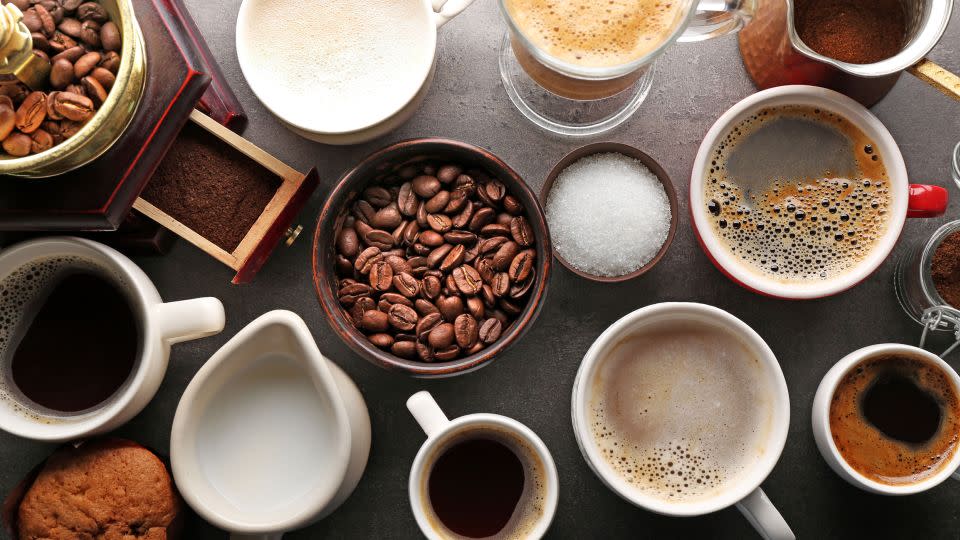It’s not OK to let kids drink coffee — so why do we do it?
We have become a coffee-crazed culture. Yet with all the studies coming out on how a cup of joe can reduce the risk for diabetes, heart disease, stroke, dementia and some cancers, what’s the harm?
It’s even trickled down to children.
Despite years of warnings from pediatricians and other health professionals that coffee and other caffeinated beverages such as sodas and sports drinks can be harmful to youth, parents are allowing their little ones — even toddlers — to drink those beverages.
A 2015 study of Boston moms found that 14% of those surveyed allowed their 2-year-olds to drink between 1 and 4 ounces of coffee a day (a half a cup of coffee is 4 ounces). The study also found that 2.5% of moms gave coffee to their 1-year-olds.
The American Academy of Pediatrics recommends no caffeinated coffee, tea, soda, sports drinks or other products for children under 12, while adolescents between 12 and 18 should limit their intake to less than 100 milligrams per day — about the size of an old-fashioned cup of coffee. A 16-ounce “grande” of Starbucks popular Blonde Roast coffee contains 360 milligrams, while the same size of its Pike Place Roast is 310 milligrams.

It’s not just coffee. A bottle of sports drink can contain nearly 250 milligrams of caffeine depending on the brand, according to a Consumer Reports investigation. A cup of tea can have up to 47 milligrams, while a diet soda can have 46.
Chocolate has some caffeine, too, with the amount rising as the chocolate darkens in color. A handful of chocolate-covered coffee beans can have 336 milligrams of caffeine, according to the US Department of Agriculture.
You can even buy caffeine chewing gum, mints, gummy bears and energy bars — and let’s not forget coffee ice cream.
What age can you drink coffee?
Because children are usually smaller in body size, it takes less caffeine to impair their functioning. An insignificant amount for an adult could be overwhelming for a small child. Too much caffeine can raise heart rates and blood pressure, contribute to acid reflux, and cause anxiety and sleep disturbances in children. In high doses, caffeine can be dangerous.
“Kids show up in the emergency room with irregular heartbeat or what we call tachycardia or rapid heartbeat,” said pediatrician Dr. Mark Corkins. “Some people think it’s cool to give toddlers a soda pop.”
The limits are based mostly based on body size, and those limits increase when a child has grown large enough to metabolize caffeine more readily. However, if children are small for their age, or have migraines, heart problems or seizures, they may be even more sensitive, according to the American Academy of Child and Adolescent Psychiatry.
With all this bad news, why are parents letting kids drink coffee?
It starts when small children begin to ask for caffeinated drinks such as coffee “because they see the parents and older siblings drinking it — it’s a ‘grown-up’ thing to drink,” said Corkins, division chief of pediatric gastroenterology, hepatology and nutrition at the University of Tennessee Health Science Center in Memphis, via email.
And because parents perceive it as harmless — and it likely is in tiny amounts — they will let their children take a sip or two, Corkins said. “However, once the parents start, it becomes a slippery slope and easier to let the kids drink what they want than fight with them.”
Coffee toppings and add-ons can affect nutrition
There’s another issue: the impact of coffee, tea, soda and sports drinks on a balanced diet.
“My other problem with kids drinking coffee is that it’s of little nutritional value, and it’s replacing something that should be nutritionally complete, such as milk and water,” Corkins said. “Milk is packed with calcium and vitamin D, and water is a nutrient. We’re like 60% water, basically an ocean.”
Then there are the add-ons. Gone are the days when coffee simply came with a lump of sugar and cream. Coffee shops on nearly every corner now offer dozens of ways to spice and fatten up your drink of choice.
“These drinks are basically a dessert,” Corkins said. “They have the foam and the shots of flavored syrups, with whipped topping and then the sprinkles on top. Presentation is better than some of the desserts I’ve seen.”
Extra sugars and heavy creams add fat and calories, while sugar-free versions can expose a children to artificial sweeteners.
What’s the bottom line? “Avoid caffeine! Why do your kids need it?” Corkins said.
“Caffeine is a stimulant that increases alertness. If your child feels like he or she needs caffeine to get through the day, it would be better to work with a pediatrician to identify the root cause of what is creating the fatigue in the first place.”
Correction: A prior version of this story misstated the amount of caffeine in coffee beans.
For more CNN news and newsletters create an account at CNN.com
